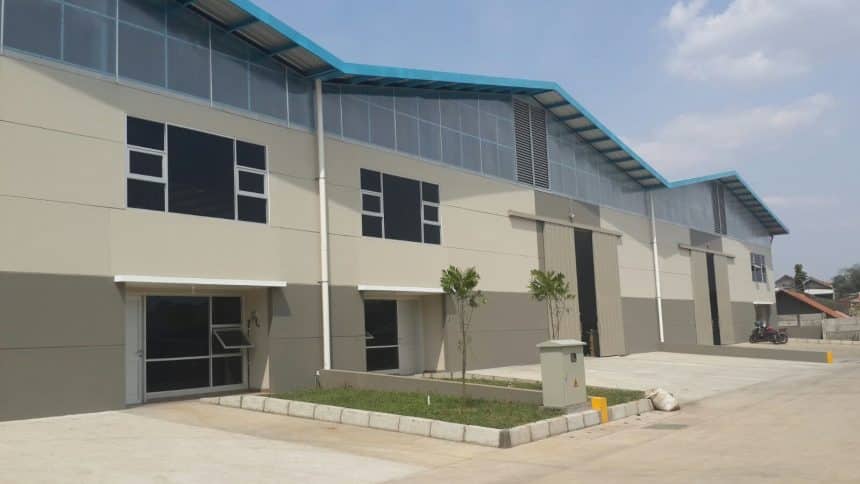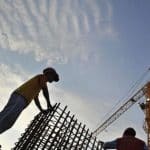Many business owners view warehouses as simply storage—simple, static, and seemingly risk-free. However, the reality is far different. Warehouses are among the most crucial and vulnerable business assets, especially for distribution, manufacturing, logistics, retail, and e-commerce companies. The value of stored goods can reach tens to hundreds of billions of rupiah, yet the greatest irony arises when protecting such a significant asset is often neglected.
In recent years, several incidents in Indonesia have once again demonstrated that warehouse risks are not trivial. Warehouse fires, electrical short circuits, human error leading to small explosions, and even natural disasters like floods can destroy entire stocks in a matter of minutes. Some incidents have even caused massive losses for goods owners, disrupted national supply chains, and even resulted in failed deliveries to major clients.
However, despite these high risks, many business owners still don’t understand the importance of property insurance for their warehouses. Without proper protection, losses can multiply and threaten the overall sustainability of the business.
This is where the crucial role of insurance protection comes into play: not just as an obligation, but as a business lifeline that often goes unnoticed. Proper protection can be the last line of defense when the unexpected happens.
Why Are Warehouses High-Risk Locations?
Operationally, warehouses appear simple, but they are actually complex and fraught with risks. Activities such as loading and unloading, forklift use, storage of flammable goods, packing processes, and high employee traffic can create numerous potential accidents. Furthermore, many warehouses in Indonesia still use outdated electrical installations, lack fire protection systems, and lack proper housekeeping standards.
A single spark from an electrical panel can trigger a major fire, especially if the warehouse stores cardboard, plastic, chemicals, or other flammable materials. Even modern warehouses remain at risk, as seen in supermarket and e-commerce warehouse fires caused by overloaded wiring and technical errors in operational equipment.
In some regions, environmental risks also play a significant role. Warehouses located in flood-prone areas or near heavy industrial areas face uncontrollable external threats. Furthermore, climate change and the intensity of extreme weather in recent years have increased the potential for building damage and inventory damage due to excessive humidity.
Another problem is the highly fluctuating value of inventory. Many warehouse owners fail to update their insurance coverage, so when an incident occurs, lost goods cannot be fully replaced. This is a common mistake that can have costly consequences for businesses.
Key Risks Threatening Warehouses in Indonesia
Warehouses have a broader spectrum of risks than many people realize. Here are some of the biggest threats to watch out for:
1. Fire — The Deadliest Risk
Fire is the biggest cause of loss in the warehousing industry. The majority of warehouse fire incidents are caused by:
- short circuit in electrical installation,
- storage of flammable goods,
- forklift engine or battery charger overheating,
- human error during the packing and loading and unloading process.
Once a fire starts, it spreads very quickly because warehouses are typically filled with cardboard, wooden pallets, plastic, and other flammable materials. Many cases show a total loss in less than an hour.
2. Floods — Especially in Big City Areas
Many warehouses are located in flood-prone areas such as Jakarta, Bekasi, Tangerang, and several industrial zones on Java Island. Flooding not only damages goods but also:
- causes stock corrosion,
- damage production machines,
- tear down the storage rack,
- stop operations for days or weeks.
The losses can be enormous, even more expensive than just the submerged goods.
3. Internal & External Theft
Warehouses are locations that are prone to loss of goods, especially:
- high-value electronics,
- imported commodities,
- fast-moving goods that are easy to resell.
Many cases actually occur due to insider threats (employees or outsourced personnel). Without a proper monitoring system, theft can continue unnoticed.
4. DamageStockdue to human error
The most common examples:
- forklift hit the shelf causing it to collapse,
- goods fell during loading and unloading,
- incorrect storage of goods causing mass damage.
This risk is small but occurs very frequently and repeatedly.
5. Environmental Risks & Force Majeure
Indonesia is a country prone to earthquakes, strong winds, and extreme weather. Warehouses that are not built to proper standards are highly susceptible to structural damage.
Key Warehouse Risks That Are Often Underestimated
Many business owners think that as long as the warehouse looks safe, tidy, and has guards, the risk is low. In fact, most major warehouse losses occur because of small risks that are ignored. The following are the most frequently encountered risks:
a. Fire – A Classic Risk That Still Causes the Greatest Losses
Warehouses are places where high-value goods are stored and typically occupy very large areas. Flammable materials such as cardboard, plastic, oil, chemicals, and even production dust can accelerate the spread of fire.
A small electrical fault, a short circuit in a panel, or even an electric forklift can be enough to trigger billions of rupiah in losses.
b. Theft and Robbery
Despite CCTV and security, lost items still occur. Many incidents are caused by:
- access point weaknesses,
- internal elements,
- SOP for goods entering and leaving is not strict.
Theft losses are often considered small, even though for large warehouses, even a small loss can be worth hundreds of millions.
c. Damage due to Weather and Floods
Extreme rain, strong winds, and clogged roof gutters can cause:
- leak roof,
- water damaged goods,
- the building structure is weakened.
Especially in flood-prone areas, stock damage can occur in just a matter of hours.
d. Human Error during Operations
This is one of the most common causes, such as:
- forklift operator hits shelf,
- items fell during the stacking process,
- worker misplaced item.
Even though it may seem small, if the item breaks, is damaged, or causes a domino effect, the claim value can be very large.
e. Other Internal Risks (Machinery & Installation)
Modern warehouses typically utilize HVAC systems, large electrical panels, racking systems, conveyors, and heavy equipment. A failure in any one of these systems can not only damage goods but also halt operations.
4. Why Are Many Businesses Late in Realizing the Importance of Warehouse Property Insurance?
Although warehouses are often the center of a company’s greatest asset value, many business owners still don’t prioritize protecting them. Here are the most common reasons:
a. It looks safe, but there are many hidden risks.
Warehouses are usually spacious, sturdy, and have security—so they look safe.
However, business owners often forget that the biggest threats actually come from:
- old electrical installations,
- human error,
- extreme weather,
- fire from a neighbor’s warehouse.
These risks often go unnoticed until it is too late.
b. Thinking that “Insurance is Expensive”
Many companies feel that insurance premiums are just a cost burden.
In fact, when compared to the value of stock and warehouse buildings, property premiums are actually very low.
Losses from a single incident can be 20–50 times greater than the annual premium.
c. Never experienced a major loss
This is one of the most common psychological factors:
“It’s always been safe.”
Unfortunately, risk doesn’t recognize history. Many large claims occur in companies that have never experienced problems for years.
d. Not Knowing That Policies Can Be Adjusted
Some warehouse owners do not know that warehouse property insurance can be tailored to:
- types of goods,
- protection system,
- activities in the warehouse,
- area and layout,
- storage capacity.
Because of this, they think the policy must be complicated and unsuitable—when in fact it is very flexible.
e. Assuming Internal Protection is Sufficient
CCTV, APAR, hydrants, and security are indeed important.
However, physical protection cannot replace financial protection.
When a major fire, flood, or massive loss occurs, companies still need large funds to restore operations, and this can only be covered by insurance.
5. What does Property Insurance for Warehouses cover?
Many warehouse owners don’t realize that property insurance policies—especially Property All Risks (PAR) or Industrial All Risks (IAR)—are specifically designed to provide broad and comprehensive coverage. This means that a variety of risks that could cause physical damage or material loss can be covered under a single policy.
The following are the main coverages that are usually guaranteed:
a. Fire — The Most Common and Most Damaging Risk
Electrical incidents, panel short circuits, worker negligence, and even small sparks can trigger losses of billions of rupiah.
Insurance covers:
- building damage,
- stock damage (finished goods, raw materials, spare parts),
- machine & equipment damage.
b. Internal Explosions and Detonations
For example from:
- boiler,
- compressor,
- gas cylinders,
- production system.
Physical damage due to the explosion is included in the warranty.
c. Floods & Typhoons
Extreme weather is becoming more frequent. Warehouses located in flood-prone areas are strongly advised to have extended Flood & Storm coverage.
This includes:
- building damage,
- damage to goods,
- mud cleaning and restoration costs.
d. Theft & Robbery
Stock theft—either from external parties or internal individuals—can erode a company’s profits.
Property insurance can provide coverage against losses due to criminal acts under certain conditions.
e. Damage Due to Falling Objects from Outside
For example:
- fallen tree,
- building materials from the neighboring project,
- plane or drone crash,
- The electricity pole collapsed.
The policy covers physical damage to the building or warehouse contents.
f. Damage from Vehicles Colliding with Warehouses
Incidents of forklifts, logistics trucks, or other vehicles accidentally hitting buildings often occur in warehouse environments.
Insurance covers physical losses resulting from the collision.
g. Additional Costs After Loss (Additional Costs)
Including:
- fire fighting costs,
- architect / consultant fees,
- debris removal costs,
- repair acceleration costs.
h. Business Interruption (OptionalBut Very Important)
If a warehouse is damaged and operations cease, a company could lose revenue. Business Interruption (BI) coverage provides protection for:
- loss of profits,
- fixed cost,
- employee salary,
- operational costs during the recovery period.
Case Study: Warehouse Losses in Indonesia Prove Insurance Is Not Optional
Discussing warehouse risks often sounds trivial, simply because warehouses are considered passive storage areas. However, numerous major incidents in Indonesia demonstrate that a single incident can devastate a company’s operations and finances within hours.
One real example is the incident major fire at a logistics warehouse in the Marunda area, North Jakarta, which destroyed thousands of square meters of storage space. The fire started from a small short circuit in an electrical panel, but because of the presence of flammable materials such as cardboard packaging, wooden pallets, and plastic, the fire spread rapidly. Damage was estimated to have occurred in less than an hour.reaching more than tens of billions of rupiah, including building damage, lost stock, and restoration costs.
In another case, a large e-commerce warehouse in Tangerang experienced extreme flooding which submerged thousands of packages and merchandise. While flooding is a predictable risk, losses remain difficult to avoid due to the high volume of goods piled up during peak season. Losses are estimated to reach billions of rupiah in a single incident.
These two examples show one important thing: warehouses are a very vulnerable asset, and the losses are always much greater than anticipated. Without proper property insurance coverage, recovery can take months and even threaten business continuity.
The Role of Insurance Brokers in Securing Your Warehouse
Amidst the complexity of risks that threaten warehouses—from fires, electrical short circuits, floods, theft, to human error—the role of…insurance broker becomes crucial. Many companies actually understand the importance of protection, but are confused about where to start. This is where brokers come in.strategic partners, not just a police provider.
First, brokers help to dorisk assessmentA comprehensive assessment of your warehouse. Each warehouse has different risk characteristics depending on the type of goods, flammable materials, electrical systems, and operational management. Brokers ensure these risks are identified before selecting the right insurance product. Without this process, companies may end up purchasing irrelevant or inadequate policies.
Secondly, the broker ensures that you get best policy with the most efficient premiumMany business owners don’t realize that differences in policy wording, deductibles, and sublimits can significantly impact coverage when a claim occurs. Brokers negotiate directly with insurance companies to ensure clients receive maximum protection without excessive costs.
Most importantly, the broker becomesprincipal advocateClaims management. When a warehouse incident occurs—for example, a fire or stock loss—the broker handles documentation, communicates with the insurance company, and negotiates for payment of the claim based on the value of the loss. Without a broker, many companies find the claims process time-consuming and often technically complex.
Conclusion
Warehouses often seem like “safe and secure” assets, but they actually harbor the greatest concentration of risks in the business chain—from fire, flood, theft, to damage to high-value goods. Many companies only realize the importance of protection when a major incident occurs, when financial losses, operational disruptions, and even loss of customers are unavoidable. This is where…property insurance for warehouses is not only important, but just to maintain business continuity.
Protecting your warehouse means protecting the core of your business: inventory, assets, and revenue streams. With the right protection and tailored policies tailored to your risk profile, companies can minimize the impact of losses and ensure stable operations even in the event of a major incident.
For this protection to be truly effective, you need an expert partner who understands the risks, understands policy wording, and can manage claims quickly and accurately.
L&G Insurance BrokerWe are here as a trusted partner for companies that rely on warehouses as the backbone of their business. With extensive experience, access to numerous insurance companies, and proven claims capabilities, L&G ensures you get the best possible coverage.best protection, efficient premiums, and full assistance during claims.
—
DON’T WASTE YOUR TIME AND SECURE YOUR FINANCIAL AND BUSINESS WITH THE RIGHT INSURANCE.
HOTLINE L&G 24 JAM: 0811-8507-773 (CALL – WHATSAPP – SMS)
Website: lngrisk.co.id
Email: halo@lngrisk.co.id
—













